Overview of the Human Digestive System
1/29
There's no tags or description
Looks like no tags are added yet.
Name | Mastery | Learn | Test | Matching | Spaced |
|---|
No study sessions yet.
30 Terms
What are the primary nutrients provided by food?
Food provides energy and essential molecules that animals cannot synthesize.
What constitutes an optimal diet in terms of macronutrients?
An optimal diet contains more carbohydrates than fats and a significant amount of protein.
What is a calorie?
A calorie is a measure of energy; 'small' calories (cal) estimate the energy required to raise the temperature of 1g of water by 1 °C, while 'big' calories (kilocalories, Cal) refer to the calories in food.
How many calories are in one kilocalorie?
1000 calories = 1 kilocalorie (Cal).
What are the primary sources of carbohydrates?
Carbohydrates are obtained from cereals, grains, and breads.
How many calories do carbohydrates provide per gram?
Carbohydrates provide approximately 4.1 Calories per gram.
What roles do dietary fats play in the body?
Fats are used to construct cell membranes, insulate nervous tissue, and provide energy.
What are the main sources of dietary fats?
Dietary fats are obtained from oils, margarine, butter, fried foods, meats, and processed snack foods.
How many calories do fats provide per gram?
Fats provide approximately 9.3 Calories per gram.
What are proteins and their sources?
Proteins are obtained from foods like poultry, fish, meat, and grains.
How many calories do proteins provide per gram?
Proteins provide approximately 4.1 Calories per gram.
What are essential amino acids?
Essential amino acids are eight amino acids that humans cannot synthesize and must obtain from food.
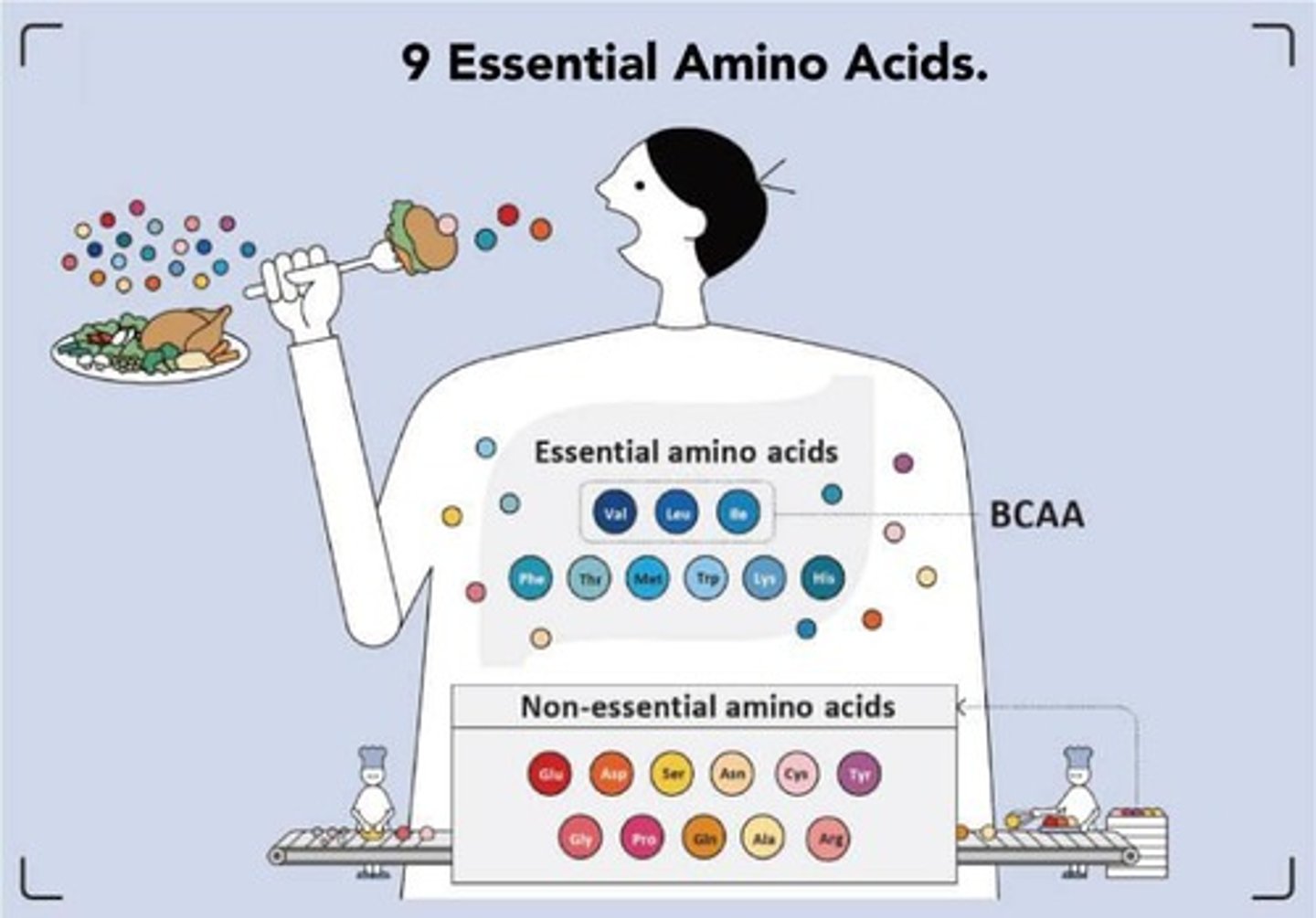
What is fiber and its significance in the diet?
Fiber is the part of plant food that cannot be digested by humans, and low fiber diets are associated with slower food passage through the colon and increased risk of colon cancer.
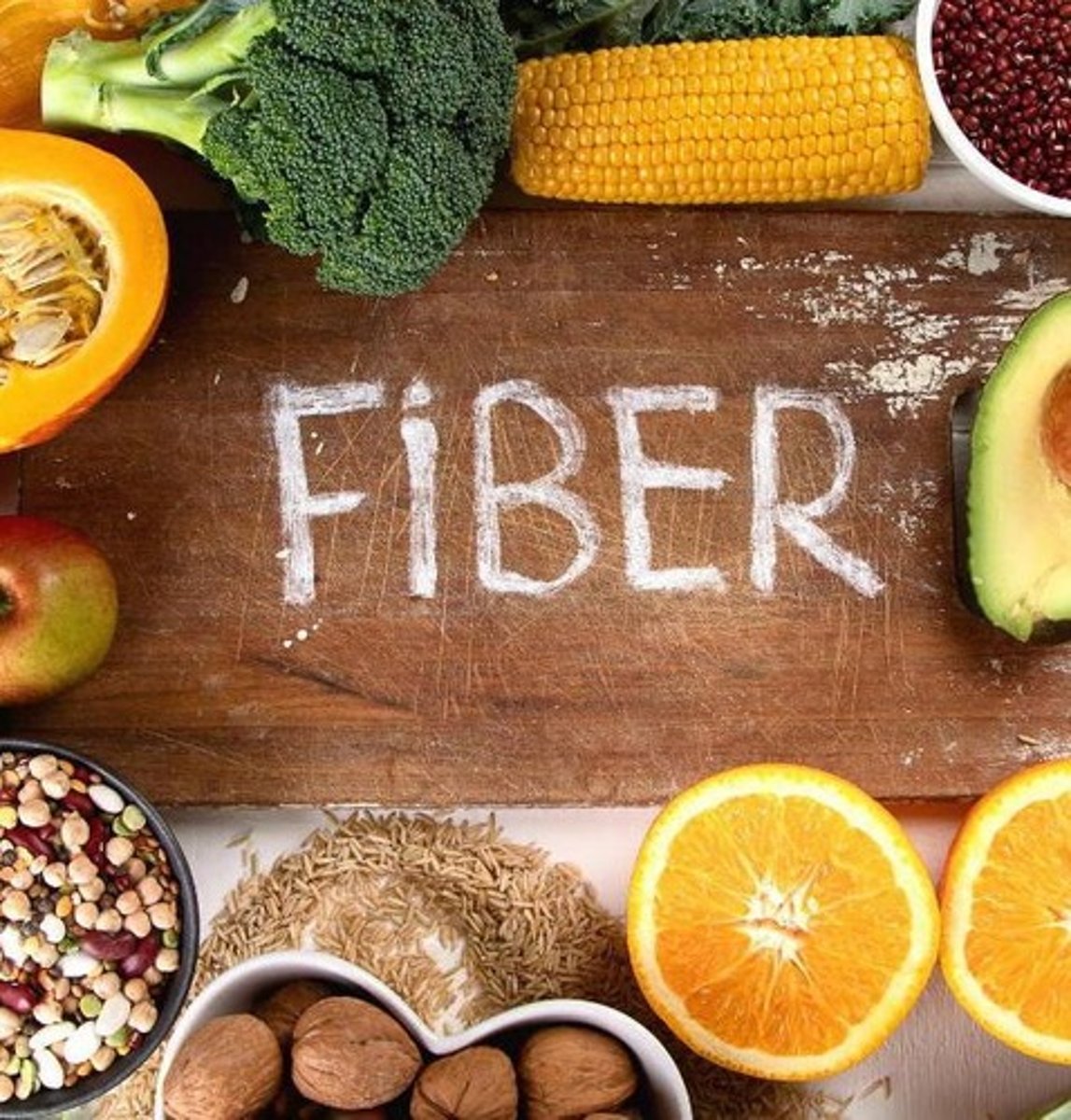
What are trace elements and vitamins?
Trace elements are essential minerals required in very small amounts, while vitamins are essential organic substances used in trace amounts, often as cofactors for enzymes.
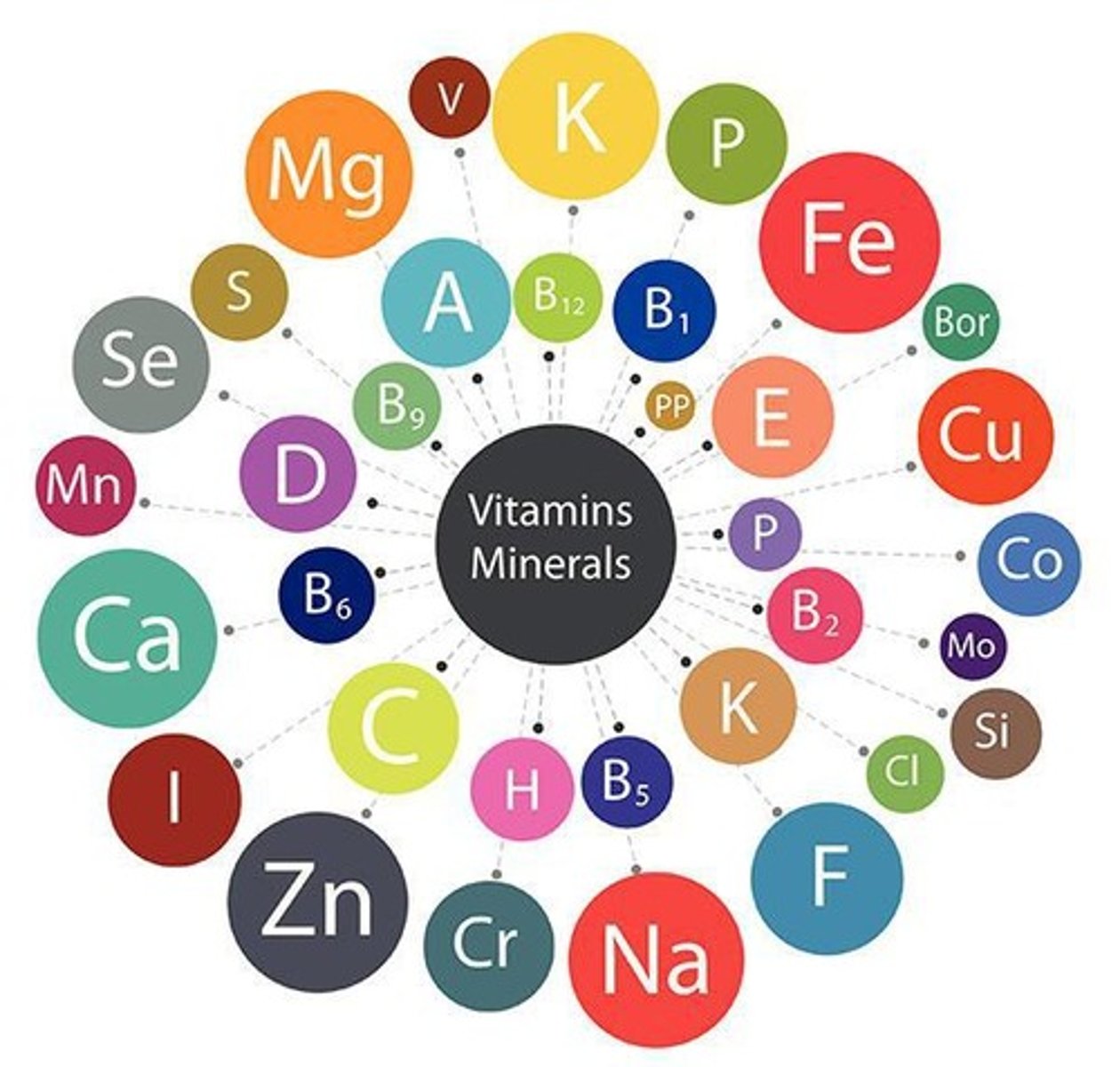
What are the three groups of heterotrophs based on their food sources?
Heterotrophs are divided into herbivores (plant eaters), carnivores (meat eaters), and omnivores (both plant and animal eaters).
What is the alimentary canal?
The alimentary canal is a digestive tract with a separate mouth and anus, allowing for specialization and unidirectional transport of food.
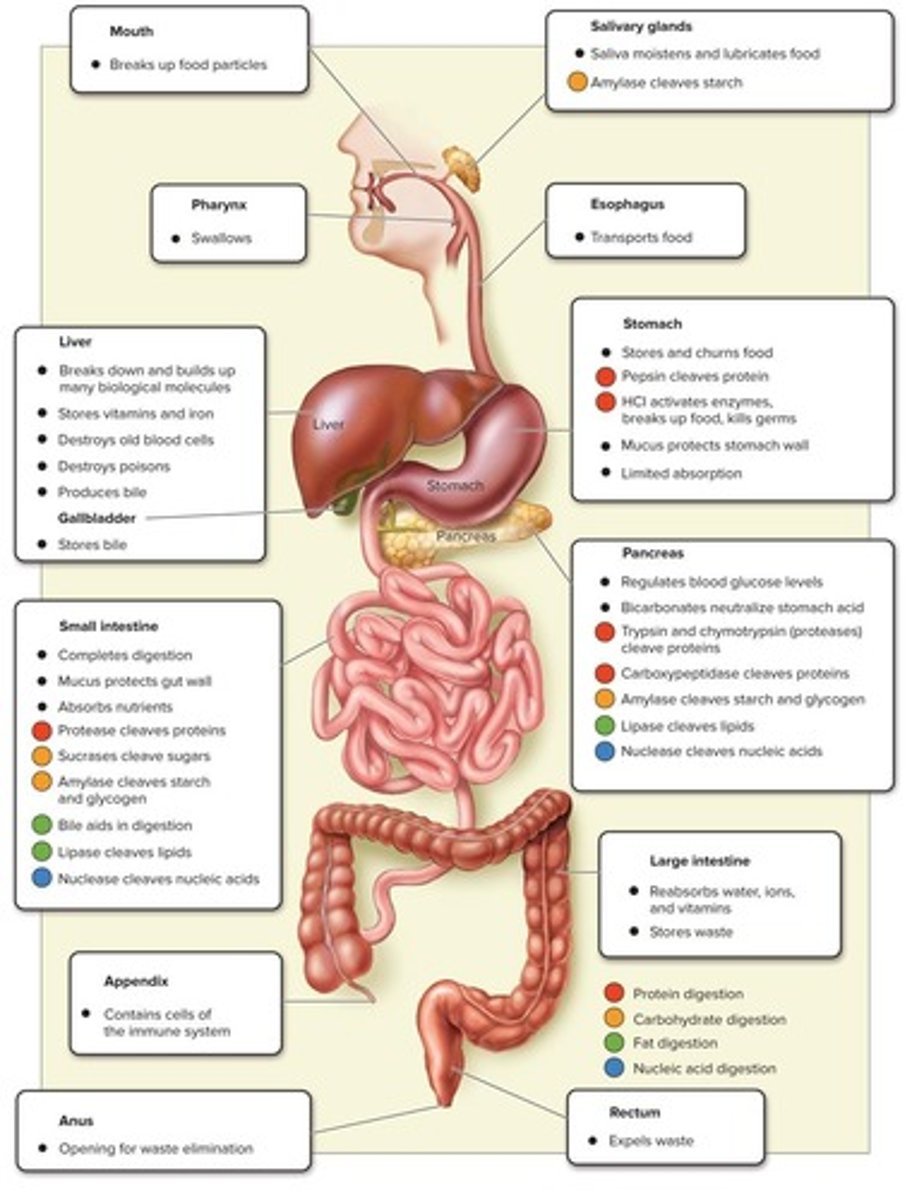
What is the role of peristalsis in digestion?
Peristalsis is the coordinated contraction of involuntary circular muscles that propels food along the digestive tract.
What is the function of the stomach in digestion?
The stomach is a saclike portion of the digestive tract that churns food and releases gastric juice for digestion.
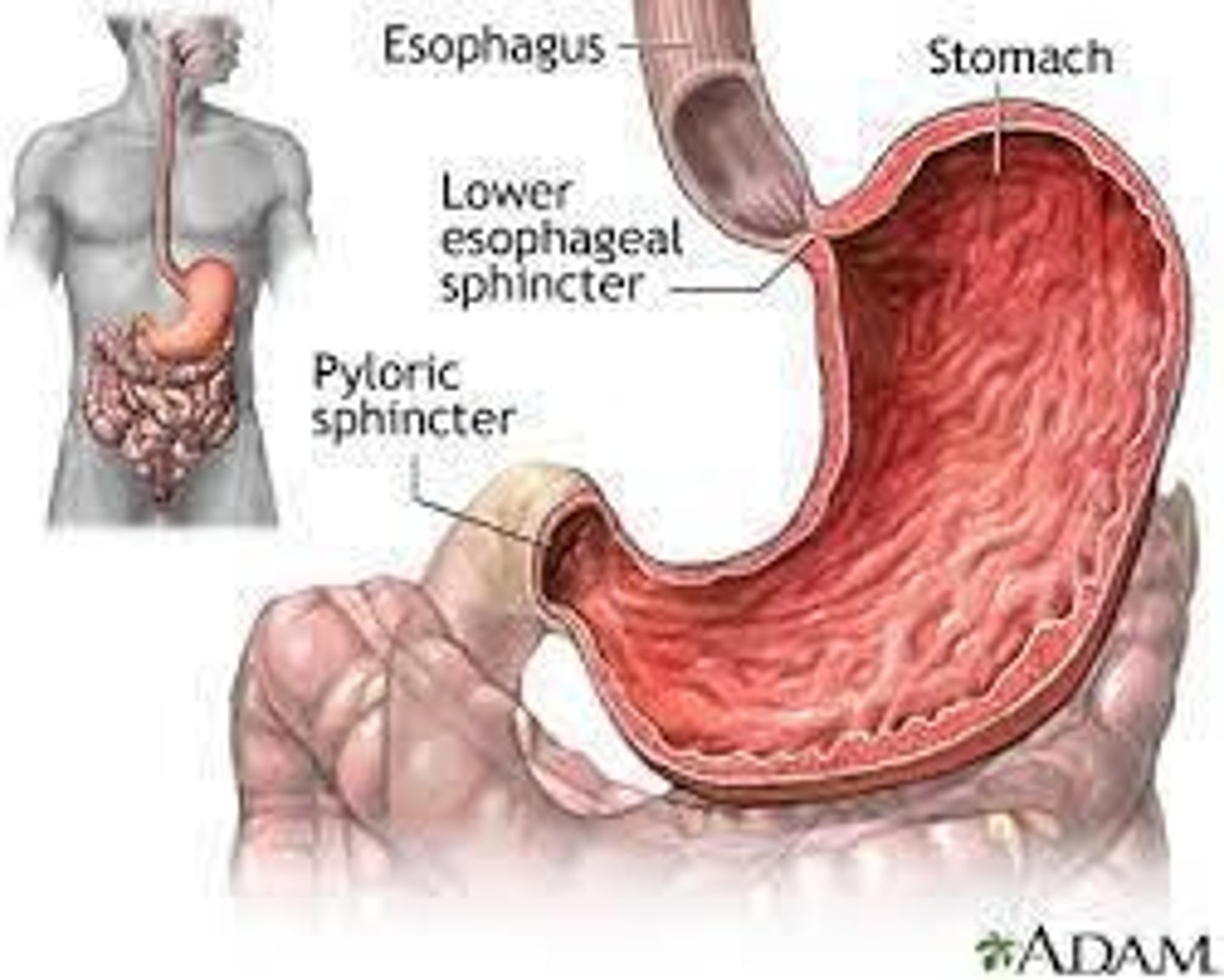
What is gastric juice and its role?
Gastric juice has a low pH (about 2), helping to denature proteins and kill bacteria, and contains pepsin to hydrolyze food proteins.
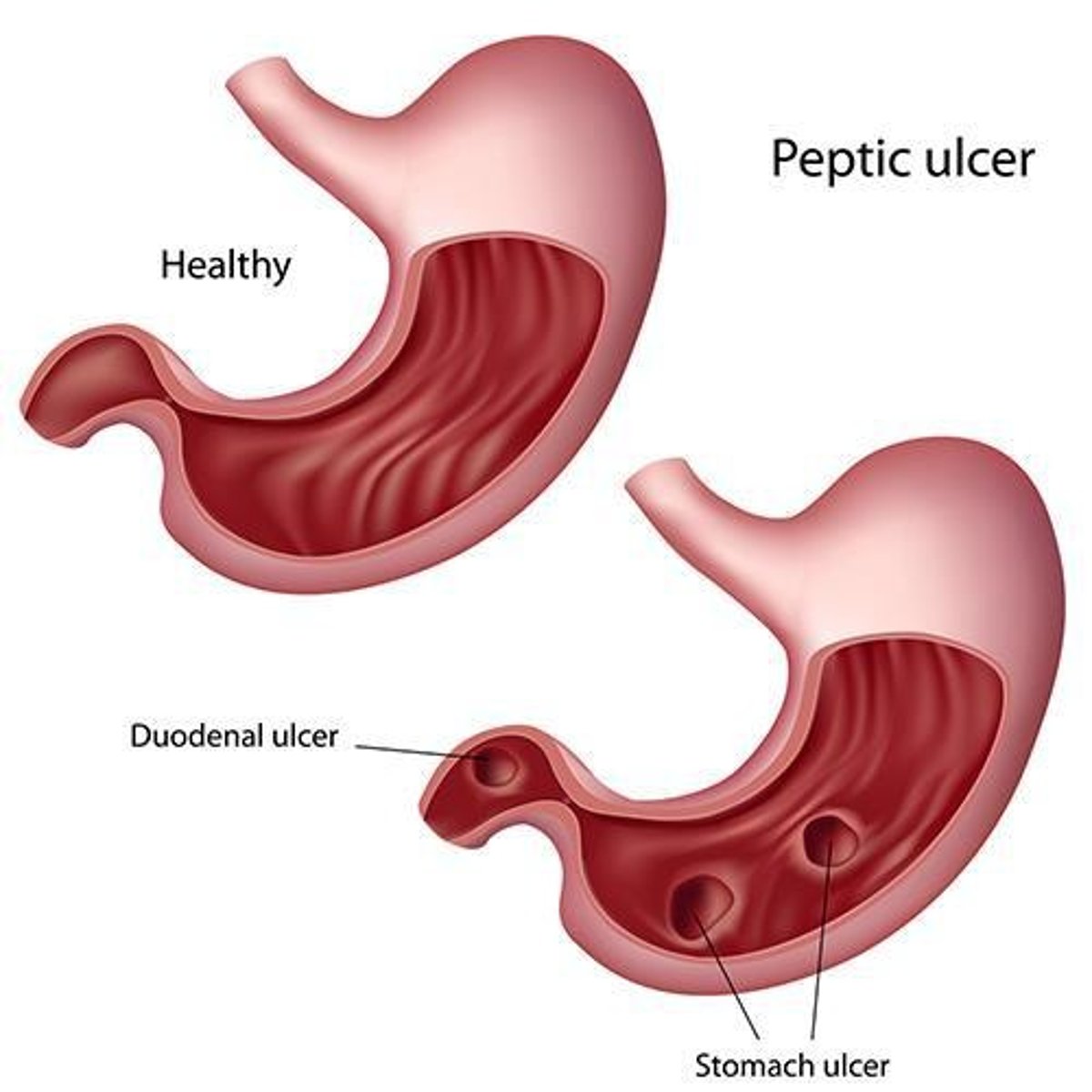
What causes gastric ulcers?
Gastric ulcers can occur due to overproduction of gastric acid, often increased by infection with Helicobacter pylori.
Who discovered the link between H. pylori and stomach ulcers?
Barry Marshall and Robin Warren discovered that H. pylori could lead to stomach ulcers.
Where does most digestion occur in the human body?
Most digestion occurs in the small intestine.
What is the primary function of the large intestine?
The large intestine compacts and stores undigested material as feces and absorbs some fluids.
What enzymes does the pancreas produce for digestion?
The pancreas produces enzymes such as trypsin and chymotrypsin for protein digestion, pancreatic amylase for starch digestion, and lipase for fat digestion.
What is the function of bile salts produced by the liver?
Bile salts aid in the digestion of fats and are stored in the gallbladder.
What are ruminants and their unique digestive feature?
Ruminants have large divided stomachs and a section called the rumen that harbors microorganisms for cellulose digestion.
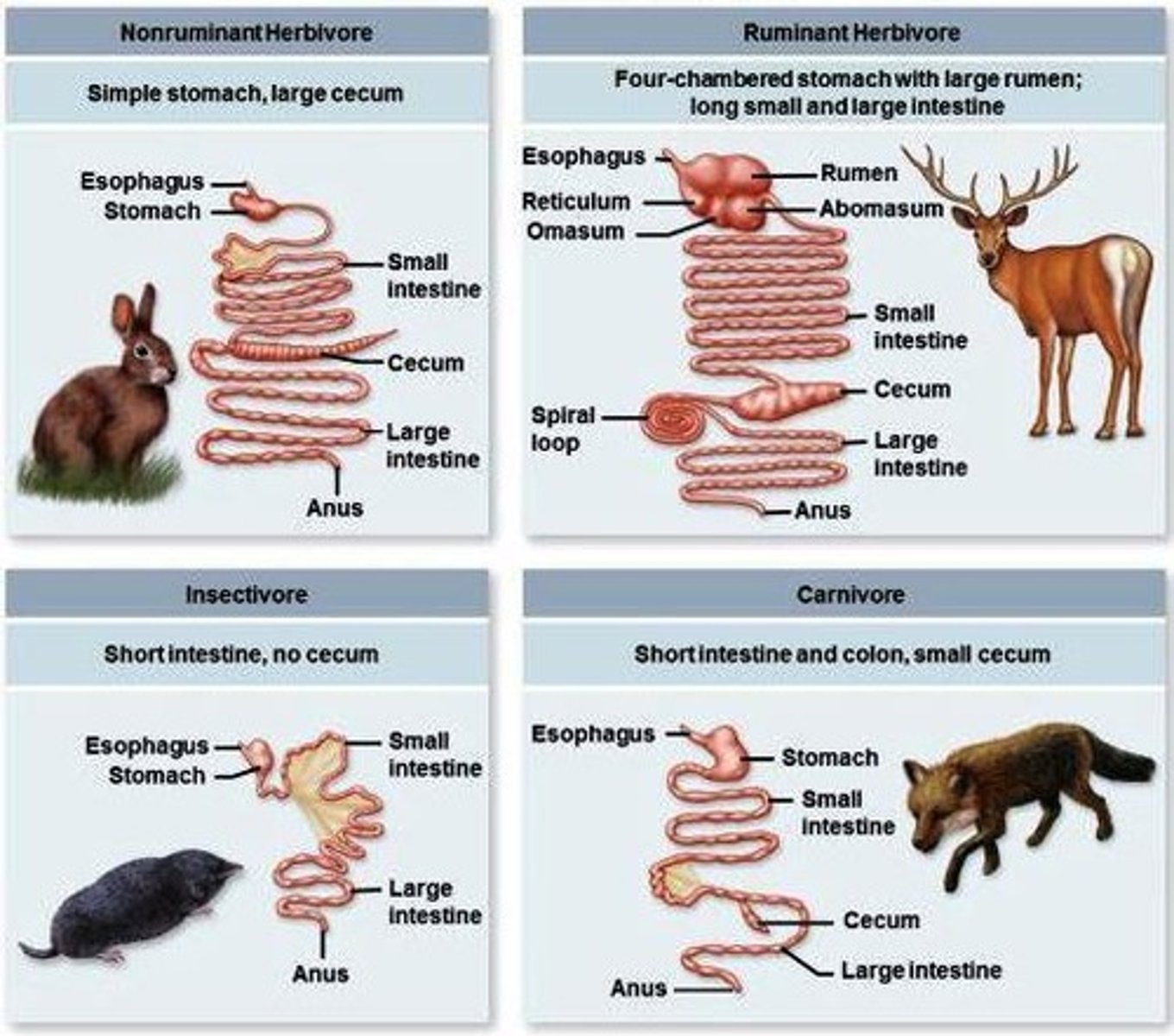
How do cecums assist some herbivores in digestion?
Cecums harbor microorganisms that can digest cellulose, allowing herbivores like rodents and rabbits to process plant material.
What are common symptoms of colon cancer?
Symptoms may include blood in stool, changes in bowel movements, weight loss, and fatigue.
What lifestyle factors increase the risk of colon cancer?
Risk factors include diet, obesity, smoking, lack of physical activity, and consumption of red and processed meats.
What is the overall function of the digestive system?
The digestive system breaks down food to extract and absorb energy and nutrients.